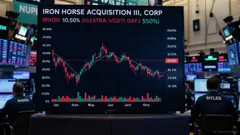Technical Signal Analysis: No Classical Patterns to Blame
The stock’s sharp rise (14.88%) occurred without triggering any major technical signals. Classic reversal patterns like head and shoulders, double tops/bottoms, or momentum crossovers like KDJ golden/death crosses all failed to activate. This suggests the move wasn’t driven by textbook chart patterns or overbought/oversold extremes. Analysts would typically look to these signals for trend confirmation, but their absence means the spike likely stemmed from external factors.
Order-Flow Breakdown: A Blackout in Institutional Activity
Despite the 19.58 million-share volume (a 458% surge from its 10-day average), there’s no block trading data to pinpoint large institutional buys or sells. This leaves two possibilities:
- Retail-driven frenzy: Small retail traders using platforms like or may have piled in without coordination.
- Dark pool activity: Institutional trades executed in non-public venues could be masking major shifts.
Without order-flow clarity, the move’s origin remains speculative.
Peer Comparison: Mixed Signals in the "Theme" Group
Related stocks showed no unified trend:
- AXL (8.6% up): Outperformed peers, hinting at sector-specific optimism.
- AAP (-1.39%): Lagged, suggesting no broad sector tailwinds.
- BH.A (-0.84%): A major stock in its peer group underperformed.
- BEEM (60% up): A small-cap outlier, but unrelated to RCAT’s core industry.
The lack of synchronicity implies RCAT’s spike was
idiosyncratic—not part of a sector-wide rotation.
Hypotheses: What Explains the Spike?
Two theories rise to the top:
- Social media buzz: The stock’s small cap ($590M market cap) makes it prone to meme-stock style speculation. A Reddit or Twitter post touting RCAT’s "hidden catalyst" (e.g., a rumored deal) could have triggered retail buying.
- Algorithmic liquidity vacuum: High-frequency traders sometimes create "false breakouts" by placing aggressive orders, tricking momentum-based algorithms into buying—then exiting before the price corrects.
The 14.88% rise in a single day, paired with no fundamental news, leans toward one of these short-term triggers.
Key Takeaways
While RCAT’s spike lacks a clear technical or fundamental cause, its volatility highlights risks in low-liquidity stocks. Investors should:
- Verify news sources before chasing meme-stock moves.
- Monitor volume spikes as warning signs of transient momentum.
The stock’s fundamentals—unchanged by today’s action—remain critical for long-term analysis.






Comments
No comments yet